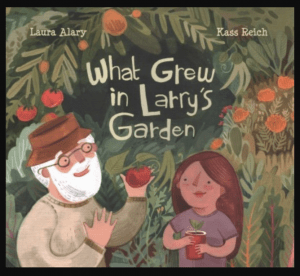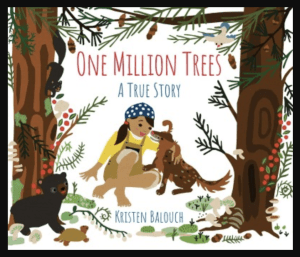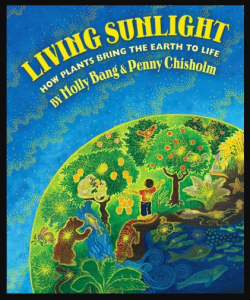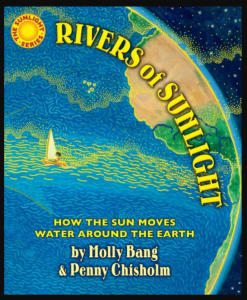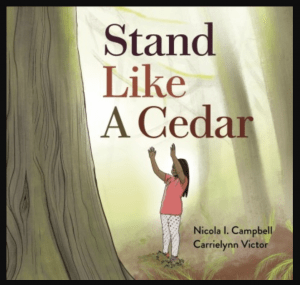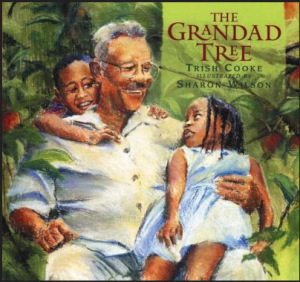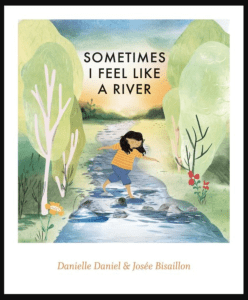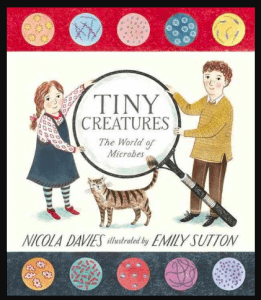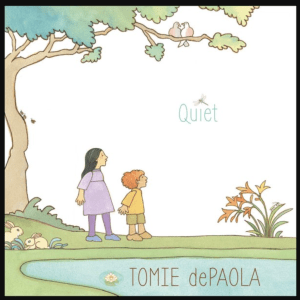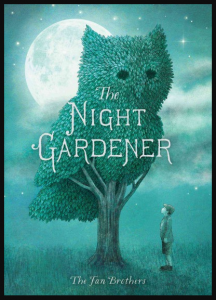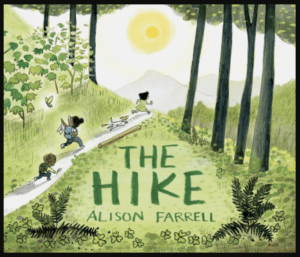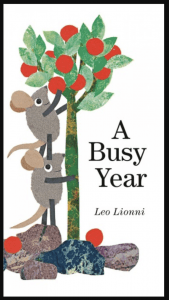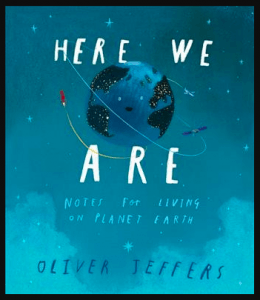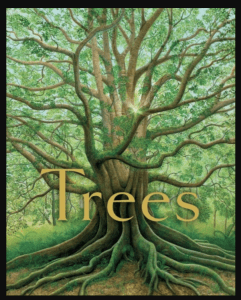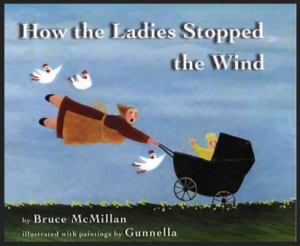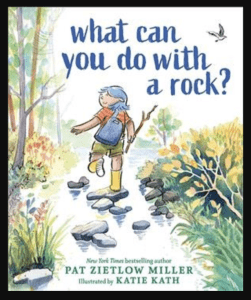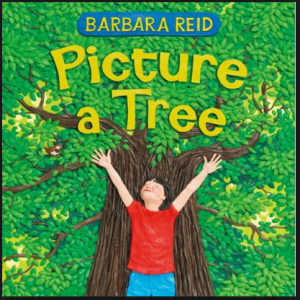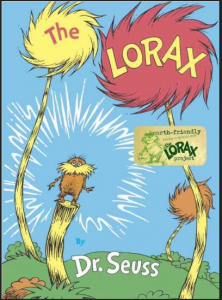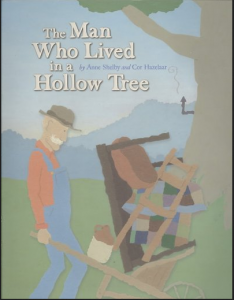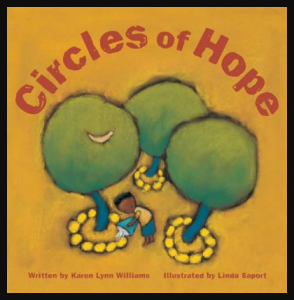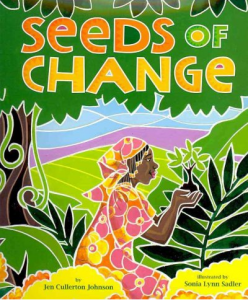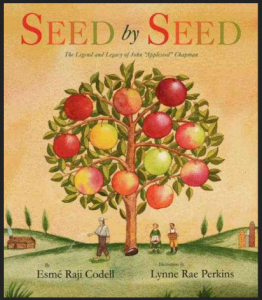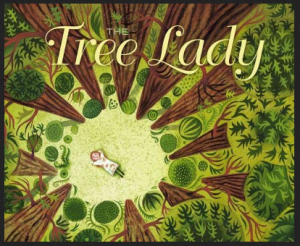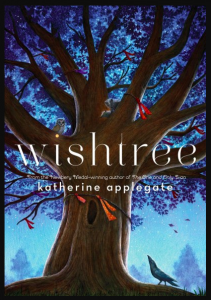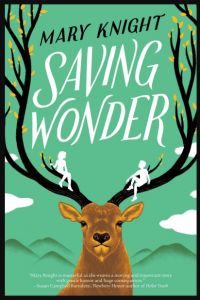Looking for a book about the love of nature and the earth?
Try one of these!
PICTURE BOOKS
Alary, Laura. What Grew in Larry’s Garden. Toronto: Kids Can Press, 2020.
Gardens bring friendship and understanding. They build goodwill in a world often filled with fear and loneliness. This quietly gentle picture book illustrated by Kass Reich is based on the true story of a Toronto schoolteacher who showed his students how to grow tomato plants and share them with others. “We can figure this out,” he says over and over again to his young neighbour Grace when problems arise. Highly recommended for gardeners of all ages.
Alexander, Sue. Behold the Trees. New York: Arthur A. Levine Books, 2001.
A land once protected by all sorts of wonderful trees is reduced over time by war and environmental neglect to desert, until new inhabitants plant trees and slowly make Israel bloom again. – CIP Includes a timeline from 5000 BCE to 1948 CE. [Israel; Trees]
Balouch, Kristen. One Million Trees: a True Story. New York: Holiday House, 2022.
This is the true story of how the author – when she was ten years old – spent a summer planting trees. She and her parents and her sisters flew from California to B.C. to join a crew planting seedlings between the stumps of trees cut down by loggers. Camping in the wilderness, they worked for forty days until they had planted one million trees. This intriguing picture book – filled with informative details – is highly recommended for readers 7 to 12 years old. Or for anyone curious about the life of a tree planter.
Bang, Molly and Penny Chisholm. Living Sunlight: How Plants Bring the Earth to Life. The Blue Sky Press, 2009.
Bang, Molly and Penny Chisholm. Rivers of Sunlight: How the Sun Moves Water Around the Earth. New York: The Blue Sky Press, 2017.
Another beautiful and informative picture book in The Sunlight Series. Highly recommended for children and adults, not only to borrow from a library but to buy and keep forever.
Bouchard, David. The Elders are Watching. Raincoast Books, 1997.
Campbell, Nicola I. Stand Like a Cedar. Winnipeg, Manitoba: Highwater Press, 2021.
Spring. Summer, Autumn. Winter. Walking through the woods, children learn about nature and all it has to teach us. Written in English, Nłe7kepmxcín, and Halq’emeylem – and accompanied by a glossary and pronunciation guide – this quietly respectful and life-affirming picture book will provoke reflection and encourage gratitude. Highly recommended for readers 7 years old and up. (P.S.: All stories by Nicola Campbell are worth reading. All gently encourage empathy and celebrate nature.)
Carle, Eric. The Tiny Seed. New York: Simon & Schuster Books For Young Readers, 1987.
Cherry, Lynne. The Great Kapok Tree: A Tale of the Amazon Rain Forest. Harcourt Brace Jovanovich, 1990.
Cooke, Trish. The Grandad Tree. Cambridge, Mass.: Candlewick Press, 2000.
” The changing nature of their apple tree, as it grows and goes through the seasons, reminds Leigh and Vin of their grandfather, who is gone but lives on in their memories.” – CIP. [Death; Grandfathers; Trees]
Cooney, Barbara. Miss Rumphius. Viking Press, 1982.
Daniel, Danielle. Sometimes I Feel Like a River. Toronto: Groundwood Books/House of Anansi Press, 2023.
There are many picture books about emotions but this one is unique. It uses similes to describe feelings and their effects upon behaviour. Feeling like a rainbow makes others smile. Feeling like the rain helps others grow. Twelve different similes encourage readers to connect with the wonders of our natural world. Full-page illustrations by Josée Bisaillon enhance this imaginative story highly recommended as a read-aloud and discussion-starter for kids 5 to 11 years old.
Davies, Nicola. Many: the Diversity of Life on Earth. Somerville, Massachusetts: Candlewick Press, 2017.
Another wonderful picture book from Candlewick Press. The author, a zoologist, explains the complexity of life in simple sentences that even the youngest of readers will understand. The illustrator elaborates with detailed and labelled drawings that will interest even the oldest of readers. Highly recommended for everyone.
Davies, Nicola. Tiny Creatures: The World of Microbes. Somerville, Mass.: Candlewick Press, 2014.
There are creatures so small that a billion of them can live in one teaspoon of soil. There are life forms so tiny that over 7 billion live on the skin of one person. Fortunately, most of them don’t harm us. Illustrated by Emily Sutton, this well-designed picture book will appeal to children 5 years old and up.
DePalma, Mary Newell. A Grand Old Tree. Arthur A. Levine Books, 2005.
dePaola, Tomie. Quiet. New York: Simon & Schuster Books for Young Readers, 2018.
“Hurry up! Be quick!” Sometimes it seems every day is filled with “Can’t you go faster?” What about being quiet and still? What about observing? What about taking time to sit and think? In this peaceful picture book, a grandfather takes two grandchildren on a walk and shows them how nature is sometimes busy and sometimes still. The simple calm green text and soft pastel-coloured illustrations combine to create a timeless reminder for all ages.
Fan, Terry and Eric Fan. The Night Gardener. New York: Schuster Books for Young Readers, 2016.
What a magnificent picture book! William, a lonely boy, creeps out at night to discover the stranger who prunes the trees into amazing creatures. The simple text in a suitably-sized font accompanies the intricate illustrations that subtly help tell the story. Highly recommended as a story to read and read again. And talk about: How does beauty change people? How does creating beauty change people? How does imagination save us? Wonderful for all ages. [Gardeners; Imagination; Loneliness; Topiary]
Farrell, Alison. The Hike. San Francisco: Chronicle Books, 2019.
Three sisters and their dog, Bean, set off on hike through the woods. Along the way, they spot snowberries, lupines, ferns, black morel mushrooms, and violets. A Western toad, a Cascades frog, a beaver, a porcupine, and a damselfly. All the way to the top of the mountain, there is more and more to discover. Set in the Pacific Northwest, this is a perfect picture book for sharing with a few people who can sit close enough to examine all the drawings of plants and animals and read all the labels. Highly recommended for nature lovers who might like to start their own illustrated journals.
Hopkinson, Deborah. Only One. New York: Anne Schwartz Books, 2022.
Nearly fourteen billion years ago, our universe began. Stars and galaxies, planets, moons and asteroids, continents, species and the diversity of life on our planet are all explained in this extraordinary picture book. Created by an award-winning author and an acclaimed illustrator, this picture book is highly recommended for readers 6 to 10 years old. Recommended as a cheerful refresher for 11-year-old readers.
Jackson, Ellen B. Earth Mother. Walker, 2005.
Lionni, Leo. A Busy Year. New York: Alfred A. Knopf, 2021.
Two mice – twins – befriend a tree on the first day of a new year. Every month – as the seasons change – they visit her and care for her until it is winter once again. A charming board book – with a humorous Christmas surprise at the end – recommended for children 4 to 8 years old.
Mclimans, David. Gone Wild: An Endangered Animals Alphabet. New York : Bloomsbury Juvenile, 2006.
Jeffers, Oliver. Here We Are: Notes for Living on Planet Earth. London: HarperCollins Children’s Books, 2017.
What do we need to remember living on this planet in space? Jeffers eloquently explains in this gently profound picture book written for his newborn son. The world is wonderfully complex. And life passes quickly. So be good to the people around you and take care of the earth. Full-page illustrations in Jeffers’ uniquely whimsical style and a friendly yet formal font help create a picture book that will appeal to readers and listeners of all ages. P.S. Teachers: read this aloud to start a discussion or inspire thoughtful writing.
Johnston, Tony. Trees. New York: Simon and Schuster Books for Young Readers, 2021.
A gorgeous picture book, perfect for reading aloud to a group of children. The pages are large, 24 by 30 centimetres. The words are minimal, placed in the middle of illustrations designed to evoke an emotional response. An afterword lists the names of the trees depicted, a list of books and articles for further reading, and notes from both the author and illustrator. Beautifully designed, this new nonfiction book by a prolific writer is recommended for ages 4 to 10. P.S. Teachers of older students might like to use this book as part of a cross-disciplinary study of science, art (drawing from different perspectives), and writing (using figures of speech).
McMillan, Bruce. How the Ladies Stopped the Wind. Boston: Houghton Mifflin, 2007.
“The women of one village in Iceland decide to plant trees to stop the powerful winds that make it difficult even to go for a walk, but first they must find a ways to prevent sheep from eating all of their saplings, while encouraging chickens to fertilize them.” – CIP..
McPhail, David. The Family Tree. New York: Henry Holt and Co., 2012.
Miller, Pat Zietlow. What Can You Do With a Rock? Naperville, Illinois: Sourcebooks Jabberwocky, 2021.
Citrine. Sandstone. Serpentine. Hematite. Slate. Rose quartz. Collect them. Study them. Sort them. Share them with a friend. Or skip them across a stream. Everywhere you go, keep your eyes open for a rock. This inspiring picture book – illustrated by Katie Kath – with additional information at the end, including a bibliography, is joyously recommended for adventurous children 4 to 9 years old.
Muldrow, Diane. We Planted a Tree. Golden Books, 2010.
Peet, Bill. Farewell to Shady Glade. Houghton Mifflin, 1966.
Peet, Bill. The Wump World. Boston: Houghton Mifflin, 1970.
Reid, Barbara. Picture a Tree. Toronto: North Winds Press, 2011.
Seattle, Chief. Brother Eagle, Sister Sky. Dial, 1991.
Seuss, Dr. The Lorax. Random House, 1971.
Seuss, Dr. The Wump World. Houghton Mifflin Co., 1970.
Shelby, Anne and Cor Hazelaar. The Man Who Lived in a Hollow Tree. New York: Atheneum Books for Young Readers, 2009.
” Carpenter Harlan Burch, who builds everything from cradle to casket, plants two trees for every one he cuts down, and when he is very old his sap begins to rise, he grows young again, and starts a family that still lives all over the mountains.” A humorous tall tale to read aloud. Recommended for ages 6 and up. [Carpenters; Humorous stories; Moving (Household); Trees]
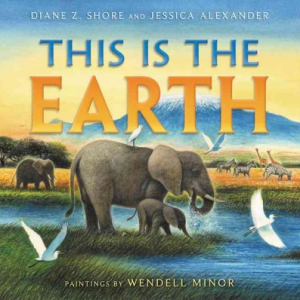
Shore, Diane Z. and Jessica Alexander. This is the Earth. Harper, 2016.
Written in the style of the nursery rhyme This is the House the Jack Built, this picture book “shows the ways in which humans have affected the environment, ways in which humans can care for the planet, and how every action taken has an impact on the Earth”. – CIP.
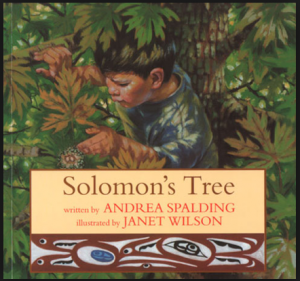 Silverstein, Shel. The Giving Tree. HarperCollins, 1964.
Silverstein, Shel. The Giving Tree. HarperCollins, 1964.
Spalding, Andrea. Solomon’s Tree. Victoria, B.C.: Orca 2002.
Stiegemeyer, Julie. Under the Baobab Tree. Grand Rapids, Mich.: Zonderkidz, 2012.
Moyo and his sister Japers hurry to the baobab tree in their African village, wondering whether they will find peddlers, conversation among the elders, storytellers, or perhaps something new. – CIP [Africa; Baobab; Brothers and sisters; Faith; Trees; Villages]
Van Allsburg, Chris. Just a Dream. Boston Houghton Mifflin, 1990.
Waldman, Neil. The Never-Ending Greenness. New York: Morrow Junior Books, 1997.
When his family comes to live in Israel after the end of World War II, a young boy begins planting and caring for trees, a practice that spreads across the whole country. – CIP [Israel; Jews; Trees]
Williams, Karen Lynn. Circles of Hope. Grand Rapids: Eerdmans Books for Young Readers, 2005.
Long ago, almost all the trees in Haiti were chopped down to use for lumber and firewood. This colourful picture book tells the story of a little boy who plants a tree in honour of his new baby sister. And soon more trees are being planted within stone circles to prevent the soil from washing away down the hillsides. While the style and size of font do not complement the beautiful illustrations by Linda Saport, this is nevertheless an informative and inspiring story for children in grades one to three. [Brothers and sisters; Haiti; Tree planting]
BIOGRAPHIES
Ms. Rosen’s favourite biographies about tree-planters: HERE
Johnson, Jen Cullerton. Seeds Of Change. New York: Lee And Low Books, 2010.
There was only one woman. There was only one seed. One ray of hope for the future. Wangari grew up in the Shadow of Mount Kenya, hearing stories about the people and land that surrounded her. Despite the fact that the trees towered over her, she had adored them for as long as she could remember. The trees made her smile because they were so strong and beautiful. Wangari refilled her spirit by planting trees, one by one. She found the trees very strong! Wow! This adventurous book makes the appearance of trees different to me!Something interesting I noticed about this book was that it teaches kids to take care of the planet! – Harleen in grade 6
Lantier, Patricia. Rachel Carson: Fighting Pesticides and Other Chemical Pollutants. St. Catharines, ON: Crabtree, 2009.
Codell, Esme Raji. Seed by Seed: the Legend and Legacy of Johnny ‘Appleseed‘. New York: Greenwillow Books, 2012.
Hopkins, H. Joseph. The Tree Lady: the True Story of How One Tree-loving Woman Changed a City Forever. New York: Beach Lane Books, 2013.
Napoli, Donna Jo. Mama Miti. Simon & Schuster Books for Young Readers, 2010.
Wangari, whose childhood was filled with stories and trees, grew up to teach the women of her country to restore the beauty of Kenya by planting trees.
Nivoli, Claire A. Planting the Trees of Kenya: the Story of Wangari Maathai. New York: Frances Foster Books/Farrar, Straus and Giroux, 2008.
Winter, Jeanette. Wangari’s Trees of Peace: a True Story from Africa. Orlando, FL: Harcourt, 2008.
NONFICTION
Biskup, Agnieszka. Understanding Global Warming with Max Axiom, Super Scientist. Mankato, MN: Capstone Press, 2008.
Bledsoe, Karen I. Consumption and Waste. Logan, IA: Perfection Learning, 2004.
Bledsoe, Karen I. Habitat Destruction. Logan, IA: Perfection Learning, 2004.
Carson, Rachel. Silent Spring. Boston: Houghton Mifflin, 2002, c1990.
Collins, Terry. Getting to the Bottom of Global Warming: an Isabel Soto Investigation. Mankato, MN : Capstone, 2010.
Oxlade, Chris. Global Warming. Mankato, Minn. : Smart Apple Media, 2012.
Spilsbury, Richard. Climate Change. St. Catharines, ON: Crabtree, 2011.
Thornhill, Jan. This is My Planet: The Kids’ Guide to Global Warming. Toronto, ON: Maple Tree Press, 2007.
Vernon, Caitlyn. Nowhere Else on Earth: Standing Tall for the Great Bear Rainforest. Victoria, B.C.: Orca Book Publishers, 2011.
NOVELS
Anthony, Joelle. Restoring Harmony. New York: G.P. Putnam’s Sons, 2010.
Applegate, Katherine. Wishtree. New York: Feiwel and Friends, 2017.
Red is an oak tree who has seen a lot of changes. Provided a home for countless little creatures. And comforted many children. But now someone wants to get rid of Red. What will happen to this venerable neighbourhood tree?
A wonderful read-aloud novel for children 7 to 9 years old. A wonderful story for imaginative readers who enjoy seeing life from a wider perspective.
Cassidy, Sara. Slick. Victoria, BC : Orca, 2010.
Child, Lauren. What Planet Are You From, Clarice Bean? Candlewick Press, 2002.
Cooper, Susan. Green Boy. New York: Margaret K. McElderry Books, 2002.
Hobbs, Will. The Maze. New York: Avon, 1998.
Doder, Joshua. Grk: Operation Tortoise. New York: Delacorte Press, 2009.
Hiassen, Carl. Hoot. New York: Alfred A. Knopf, 2004, c2002.
Howard, Chris. Rootless. New York: Scholastic Press, 2012.
In a bleak future world, seventeen-year-old Banyan builds trees from salvaged scraps of metal. But then he meets a woman who sets him on a quest to find the last living trees. A convincing and compelling novel for readers 12-years-old and up. [Environmental degradation; Fathers and sons; Love stories; Science fiction; Trees; Voyages and travels]
Knight, Mary. Saving Wonder. New York: Scholastic Press, 2016.
Twelve-year-old Curley Hines lives in the Appalachian Mountains of Kentucky. Most of his relatives have died, his father in a coal mining accident and his mother and younger brother in a mud slide caused by the mine. So now he lives with his grandfather who – every week – gives him a new word to learn: 26 letters x 2 = 52 weeks and 52 new words every year.
Right from the first sentence, this debut novel is full of the joy of life: love, hope, and determination. And the power of words! Which is exactly what Curley needs to use when the mine announces their plans to blow the top of Red Hawk Mountain. Coal is needed and a new mine manager is resolute in his decision to expand operations. Curley and his best friend Jules – with the help with her new boyfriend, the mine manager’s son – get together to oppose the destruction of their beloved home.
Each chapter in the story emphasizes one of Curley’s words and ends with a definition. The humour in the format is delightful and never feels overbearing or didactic, probably because of Curley’s spunk and his grandfather’s loving wisdom. This novel is highly recommended for readers 10 to 14 years old. [Coal mines and mining; Environmentalism; Friendship; Grandfathers; Kentucky; Orphans]
McNaughton, Janet. The Secret Under My Skin. Toronto, ON: Harper Collins, 2000.
Patterson, James. The Final Warning. New York: Little, Brown, 2008.
Schrefer, Eliot. Endangered. New York: Scholastic Press, 2012.
Click HERE for quotations about oceans.
